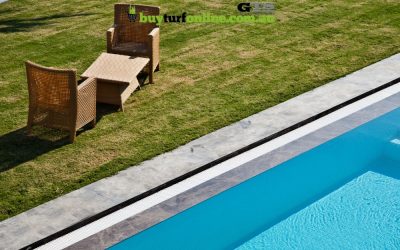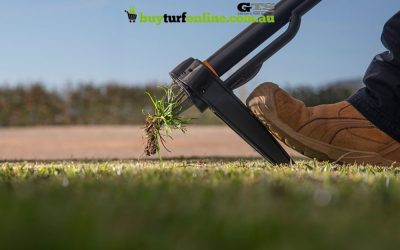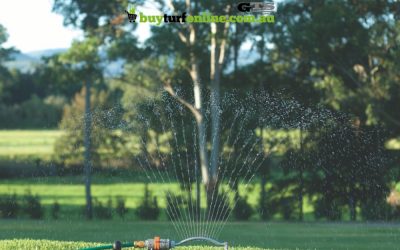How To Tell – Dormant Grass vs Dead Grass
Quick Links
Dormant Grass vs Dead Grass
Brown grass on a green lawn is not a great sight to see.
Many people consider brown grass to be dead but this is not always the case. Instead, brown grass could simply mean it’s dormant.
Before finding a solution to the problem, you first need to identify what’s causing your natural grass to change in colour.
You can’t simply conclude that a plant is dead or dormant by merely looking at the colour.
To identify the cause, you should be familiar with the differences between dead grass and dormant grass.
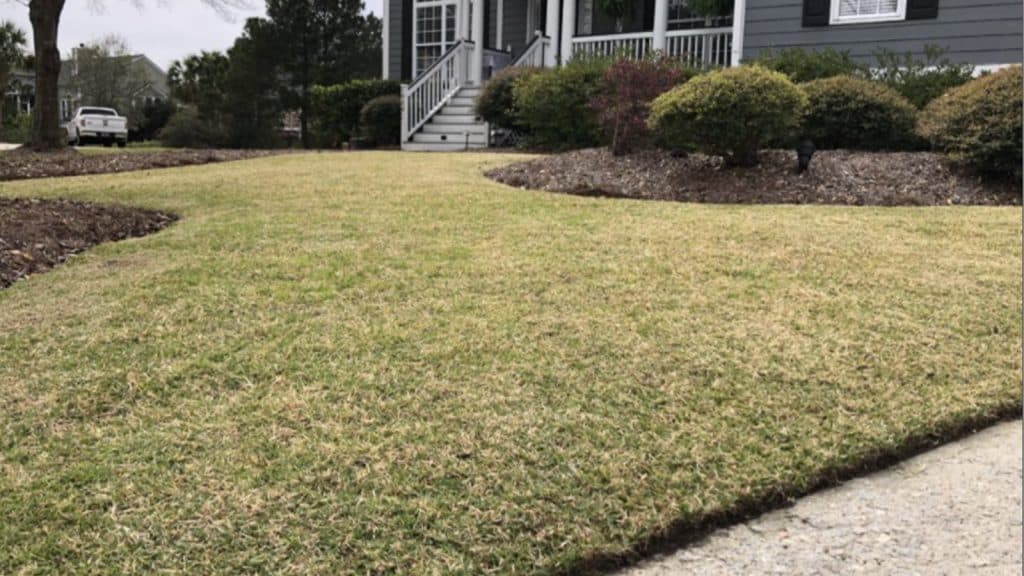
What is Dormant Grass?
Dormancy is a grass’ natural protection mechanism to survive or withstand weather changes. It can turn your entire lawn, brown.
In Australia, there are two common types of grass dormancy – summer and winter dormancy.
Extreme weather conditions could have adverse effects on grasses.
For example, warm-season grasses such as Bermuda grass, Buffalo grass, Zoysia grass, Kikuyu grass and Couch grass among others grow best in the hot summer.
Come wintertime, warm-season grasses typically go into winter dormancy.
On the other hand, cool-season grasses like the Bentgrass, Bluegrass, Fescues and Ryegrass, although they are well adapted to the cool winter climate, may still go dormant in areas where the soil freezes.
When the winter season isn’t that cold, they could stay green all season.
However, during drought conditions or hotter months, they could undergo summer dormancy.
Dormancy is one of the preventative measures that grasses use to survive extreme weather conditions.
Generally, grasses go into dormancy to conserve water and energy to stay alive.
Instead of sending vital resources to develop green blades of grass, those resources are sent to the crowns and roots for the grass to survive winter or extreme dry seasons.
Grasses could stay in the dormant stage for up to six weeks without experiencing any adverse effects.
Generally, once the weather improves they start to slowly recover to turn to green colour again.
Dormancy is much more common in the southern parts of Australia than in Brisbane, Cairns and other northern cities where grasses tend to grow fairly well all year round.
Possible reasons for dormant grass
- To withstand harsh climatic conditions
- Low availability of water
What is Dead Grass?
Unlike dormant grasses that can recover once temperature improves, dead grass won’t.
When the grass is dead, it remains brown even if the temperature changes or despite a healthy environment.
There’s nothing you can do about it.
Dead grasses need to be replaced. As a rule of thumb, you should not lay fresh turf on top of dead grass.
Possible reasons for dead grass
- Drought or extreme heat
- Low fertilization
- Incorrect way of mowing the grass
- Fungus on the lawn
Different Ways to Identify Dormant Grass and Dead Grass
It can be a bit challenging to tell the difference between dead and dormant grass because both appear to be brown grass.
Try this quick quizz.
| Conditions | Dead Grass | Dormant Grass |
|---|---|---|
| Does the grass improve with water | No | Yes |
| Does the grass lift when it is pulled? | Yes | No |
| Does it change colour? | Yes, pink, white, black, red | No, usually just brown |
| Are the roots white? | No | Yes |
| Does it occur seasonally? | No | Yes, its most frequent during the winter months or during a drought. |
| Does it have a spongy bounce? | No | Yes |
| Does it have a presence of thatch? | Yes, a high presence | Yes, a small presence |
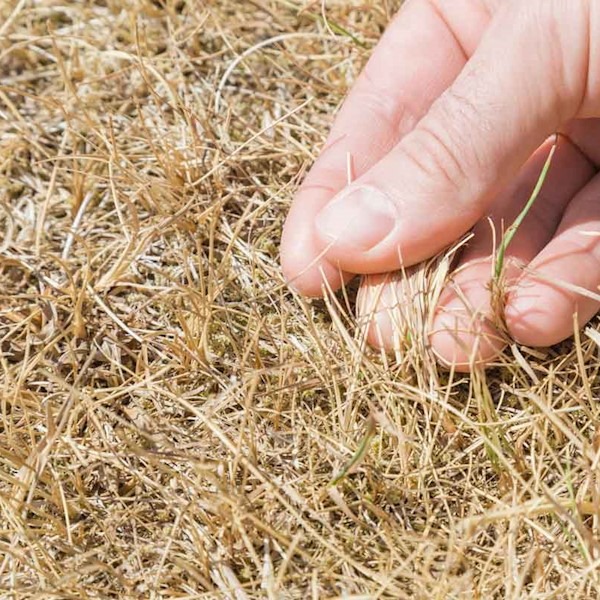
Try the Tug Test
One of the easiest ways to identify if the grass on your lawn is dying grass or dormant grass is through a tug test.
To do a tug test, find patches of brown grass on your lawn, grab some grass blades, and pull. If you can easily pull the grass with no resistance, it is dead.
Dead grass should be replaced with new turf to maintain the appearance of your whole lawn.
Check For Patterns
Does your entire lawn turn brown or are there only distinct patches of brown grass?
You can tell the difference between dormant or dead greenery depending on the following patterns:
Uniform Brown Colours
If your entire lawn turns into the same brown colour, we can almost assume that the grasses are just dormant.
Patches and Spots
Patches or spots of brown grass on your lawn can be an indicator that the grass is dead. At least for that section of your lawn only.
Dealing with dead lawns isn’t that simple.
Before laying new turf, you need to first rule out possible pests and diseases that aren’t easily visible to the naked eye.
Pests and diseases can easily turn healthy turf into dead turf.
They can also infect and cause similar symptoms to new grasses you install on your lawn.
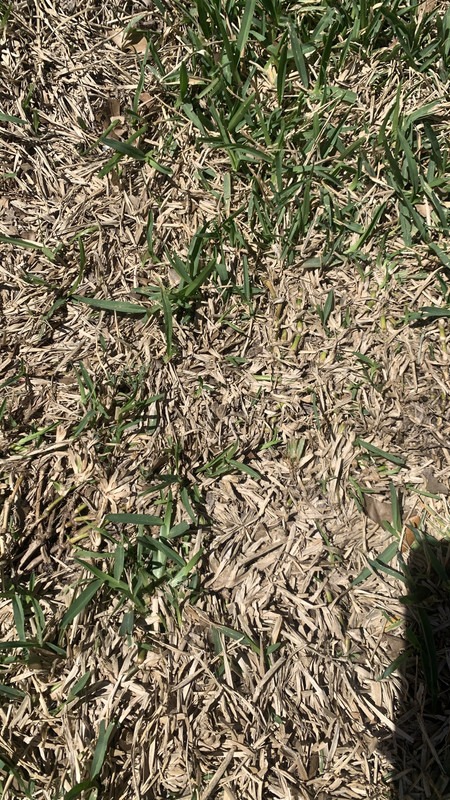
Consider Weather Patterns
Another way to tell the difference between dead and dormant grass is by watching weather changes.
Prolonged heat periods
During prolonged heat periods or warm weather, cool-season grass tends to go dormant especially if you don’t have a proper irrigation system.
A consistent watering schedule can help the grass survive during hot periods.
Cool winter
As temperatures drop continuously during winter, warm-season grass may start to change in colour from green to brown.
The most likely reason for this is that your grass is going through the dormant phase.
Dormant turf or grass is still alive and will become green again when the right temperature ideal for their growth returns.
However, grass can only stay dormant for several weeks, and in many cases, up to six weeks before they die.
Water the Grasses Regularly During Drought
Excessive heat, drought or dry conditions can also cause grasses to be dead or dormant especially if you don’t take proper actions.
When that happens, it can be difficult to tell if the grass just went dormant or is already dead. It can be a confusing sight.
To get a better idea of whether you have dormant healthy grass or dead grass, follow a watering schedule.
Watering helps dormant grasses turn green again. If in spite of your scheduled watering the grasses remain brown, they are already dead.
What Does Dormant Grass Look Like?
The most noticeable feature of dormant grasses is the brownish to tan colour of the blades of the leaf. Dormancy often happens during colder months or under drought conditions.
Should I Water Dormant Turf?
Yes, watering the grass is important to keep it alive before it dies.
Brown turf can be a disappointing sight, especially when you have spent time maintaining it throughout the year.
However, it doesn’t necessarily mean your lawn is dead. There are two possible reasons for this problem: dormant grass or dead grass.
What you do next depends on the condition of the turf. Before replacing your lawn, it’s vital that you are 100% sure whether the grass on your lawn is just dormant or is already dead.

read more!
recent posts
Poolside Turf: Choosing and Maintaining Grass Around Pools
There’s nothing quite like stepping out of a swimming pool onto soft, lush grass. But when it comes to finding the best grass for around a pool, not all lawns are created equal. Chlorine pools, heavy foot traffic, and the unforgiving Australian sun can take a toll on...
Keeping Your Lawn Green and Healthy During the Summer Heat
Discover the best grass options for your lawn with our complete guide. Make informed choices for a lush, healthy yard. Read more to find your ideal grass!
Summer Lawn Weeds: Prevention and Management
Discover the best grass options for your lawn with our complete guide. Make informed choices for a lush, healthy yard. Read more to find your ideal grass!
The Ultimate Watering Guide for Summer Lawns
Discover the best grass options for your lawn with our complete guide. Make informed choices for a lush, healthy yard. Read more to find your ideal grass!

Our Turf
TifTuf Bermuda
Buy Turf Online © 2019 All Rights Reserved. | Proudly Designed and Developed by Sydney ICT

